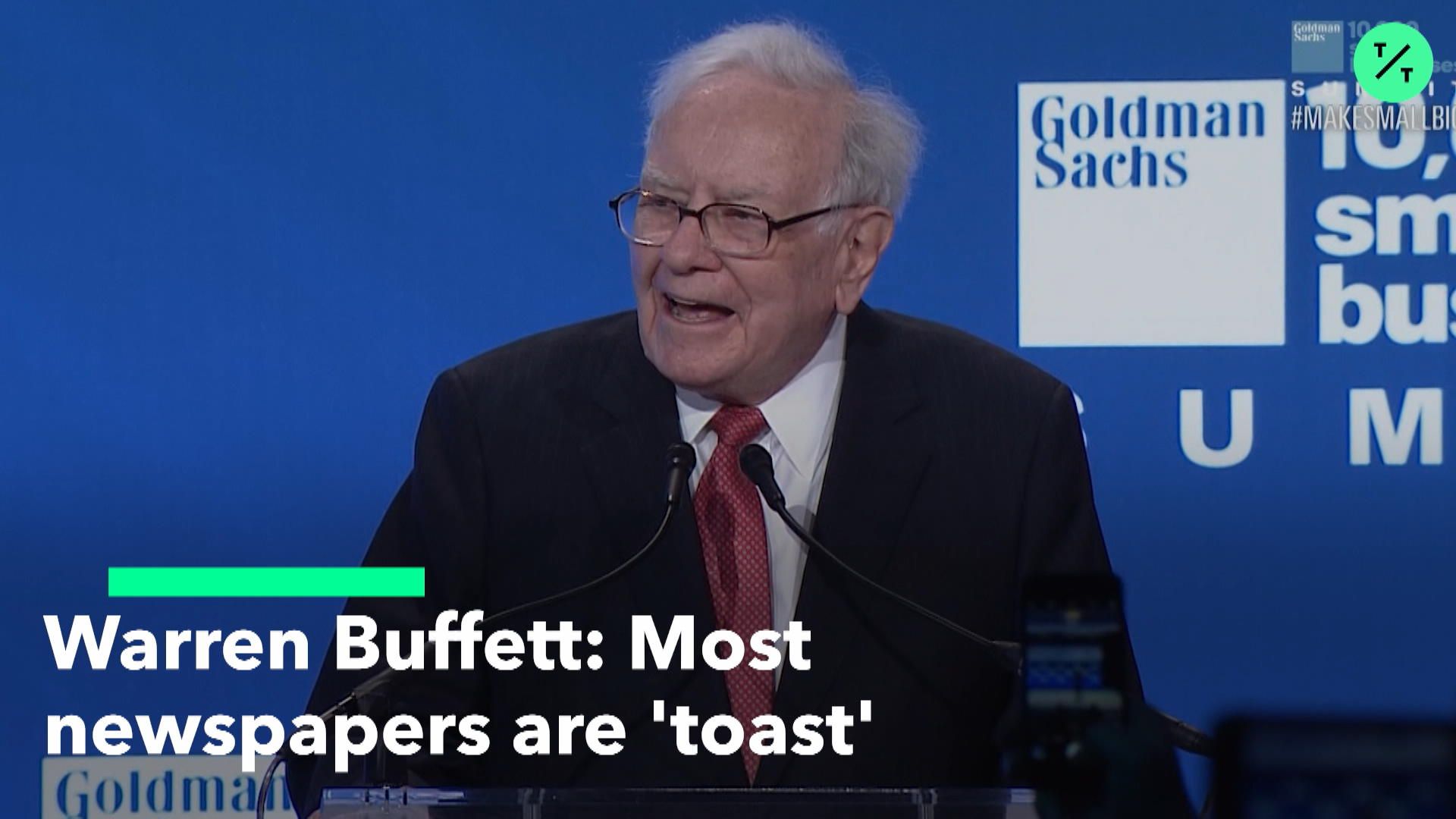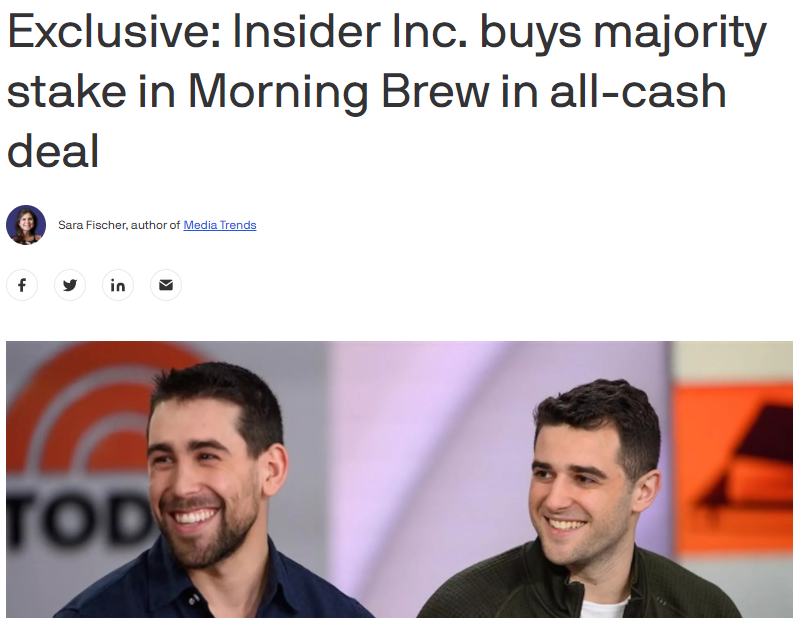The Optimist’s Edge
- Most people think the media is a lousy business, and it often is if you are an old media company. But not if you are the right kind of new media company with a global audience. Then you have a free global distribution of articles, audio and video to billions of people, and social media helps you find your exact audience. Even if your niche is very narrow, on a global scale that is millions of people.
- Some of these companies will be enormous, much bigger than the largest media companies today, and very profitable.
- Because most don’t see this, new media companies are underappreciated and undervalued and an excellent opportunity for a fact-based optimist.

Premium Supporters – click here to listen to the audio of this text.
Why old media is dying
Warren Buffett used to own newspapers. He has now sold them. That shows what a great business they were, and what a lousy investment they make now.

Why is this happening to old media companies? It boils down to three reasons.
- The internet created free and immediate distribution of news. No need to pay to get the news a day later.
- Google and Facebook offer ads that are much more effective for companies to reach potential customers.
- High costs in printing and distribution are weighing them down and make it hard to change.
This is what every one has seen. The constant staff firings, downsizing and bankruptcy of many newspapers. That makes people think that media is a lousy business opportunity. And old media is, at least in most cases.
Free distribution is a massive opportunity for journalism
Not having to invest in a printing press and distributing tons of paper across a city, nation or the entire world is a big opportunity for journalism. Everyone with internet access can read your text. Not just that, with YouTube you have a free video platform and podcast platforms for audio.
A good microphone and web camera costs a few hundred dollars, or just use a smartphone.
The entry barrier has been dramatically lowered in the last 20 years.
A narrow global niche means millions of people
The lower entry barrier means a lot more people are creating content, and if they want, they can all reach a global audience. There are, for example, a ton of new media sources covering Tesla popping up. Websites, podcasts and YouTube channels. Many of them carve out a part of the Tesla universe, like investing in the Tesla stock.
Steven Mark Ryan has 178,000 subscribers to his YouTube channel Solving the Money Problem, and makes videos almost entirely about how Tesla will make billions of dollars on different parts of its business. He has created a niche in the niche, and still had over 20 million views and made over a quarter of a million dollars in his first 12 months.
How many staffers does he have? One. Himself.
Say what? Newsletters?
A super hot trend is newsletters. They are as old as the internet, but in the last few years and especially in the previous month’s people have started paying to receive them. One of the pioneers is Ben Thompson with the newsletter Stratechery. Many people, like me, pay him $12/month or $120/year to get three newsletters every week.
Again, his niche is super narrow, and he also writes really long texts, which makes the potential audience even smaller. How much money he makes I do not know, but I’m pretty sure we are talking millions of dollars every year.
It is not just paying subscribers that works, but also ad-driven newsletters are hot. Daily newsletter Morning Brew with 2.5 million subscribers has revenue of over $20 million and made a $6 million profit. They were recently sold for $75 million to Business Insider.

Another smaller ad-newsletter, with a premium community, The Hustle, sold for a reported $27 million.
This has made Facebook look into newsletters, Twitter buying newsletter company Revue, and newsletter platform Substack raised $15 million two years ago. Most likely their valuation has gone way up since.
Content is similar to selling software
Most of the cost when creating software is upfront. When it’s done you have an almost free global distribution and zero marginal costs. Meaning that your expenses don’t go up if you sell two million copies instead of one million copies.
Something similar is going to occur in the media business. Imagine a global media company with one million subscribers. If they go to ten million subscribers their costs won’t go up ten times. They won’t have to produce ten times more content. Some costs will increase, like customer service, but for the content they have zero marginal costs.
Enormous and very profitable media companies are coming
We are seeing huge multinational companies forming in streaming. Netflix now has over 200 million subscribers, but no natural law prohibits them from reaching 500 million or even a billion subscribers. Same thing with music and Spotify. Of course, they can be outcompeted by other players, but if that doesn’t happen their potential market is huge.
I think we will see something similar with media companies. One candidate is the New York Times. An old media company, but one of few that seems to be making a successful transition. They now have over seven million subscribers, six million of them digital. The goal is ten million in 2025.

But that could just be the start. Who says that NYT can’t reach 50 million subscribers? 100 million? If their only market were the U.S., that would be nearly impossible, but it is doable with a global audience.
To reach this level the New York Times won’t have to produce ten times as much content, or hire ten times as many journalists and staff as when they had ten million subscribers. Their costs won’t be 10x, which makes it possible for them to be highly profitable.
The New York Times won’t be alone. We could have several huge media companies, and I guess most of them will be new, not old brands. The only way to build large media companies in the past was to buy many different smaller media companies, as Rupert Murdoch did. Now it is possible to reach that level with one media product, one company, not several.
Not everyone can be super negative
Most media companies today, at least in the news, compete in the same niche: Negative news. They claim to be balanced and neutral, but that is rarely the case. Over the last decades the negative bias in the news media has increased.
Since most trendlines for humanity move in the other direction – up – news media gives us a skewed view of the world.
This creates another opportunity. Not everyone wants to immerse themselves in negative headlines and topics.
How about something different? Maybe some fact-based optimism..?
This is why we founded Warp News. We have the opportunity to create a huge global media company, that has a important impact on humanity.
Mathias Sundin





